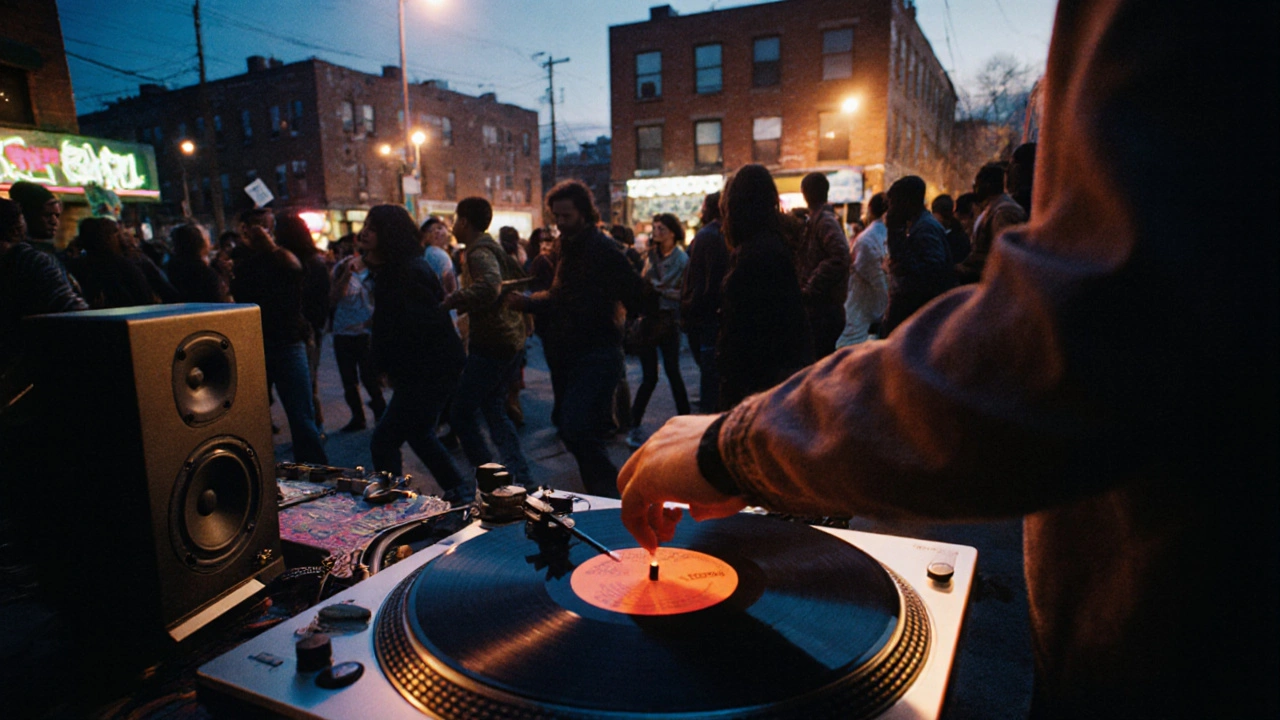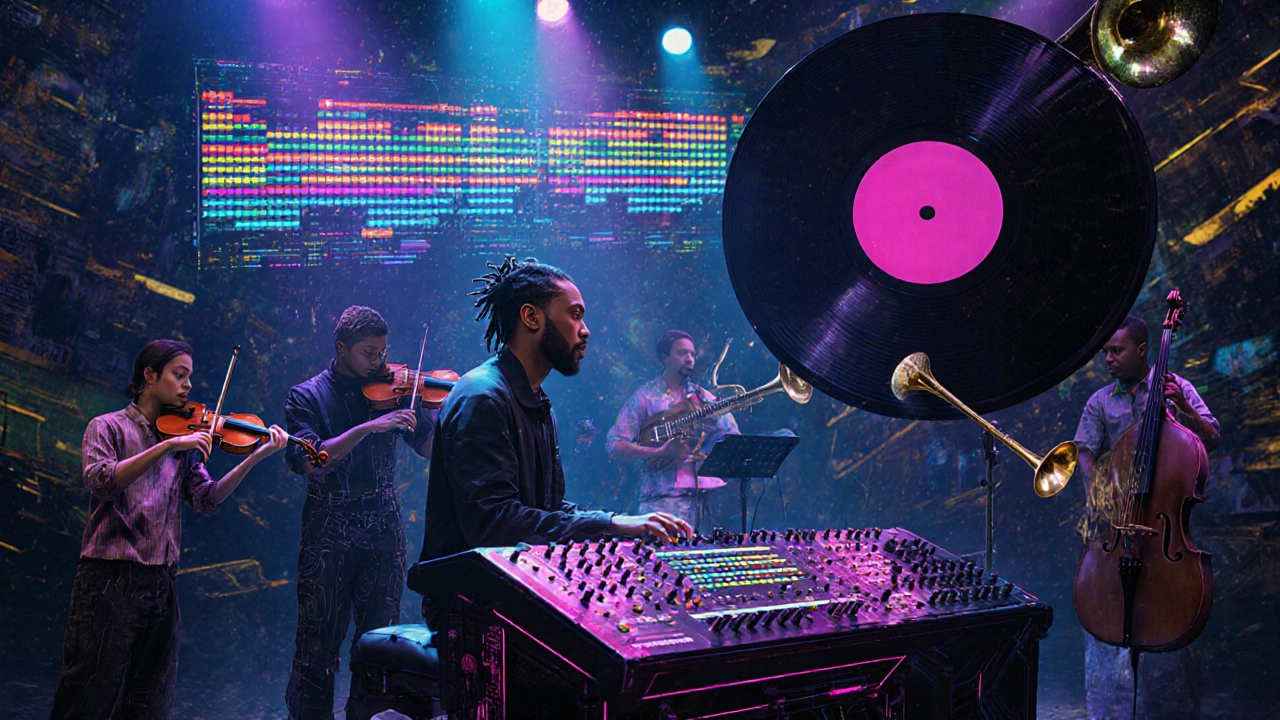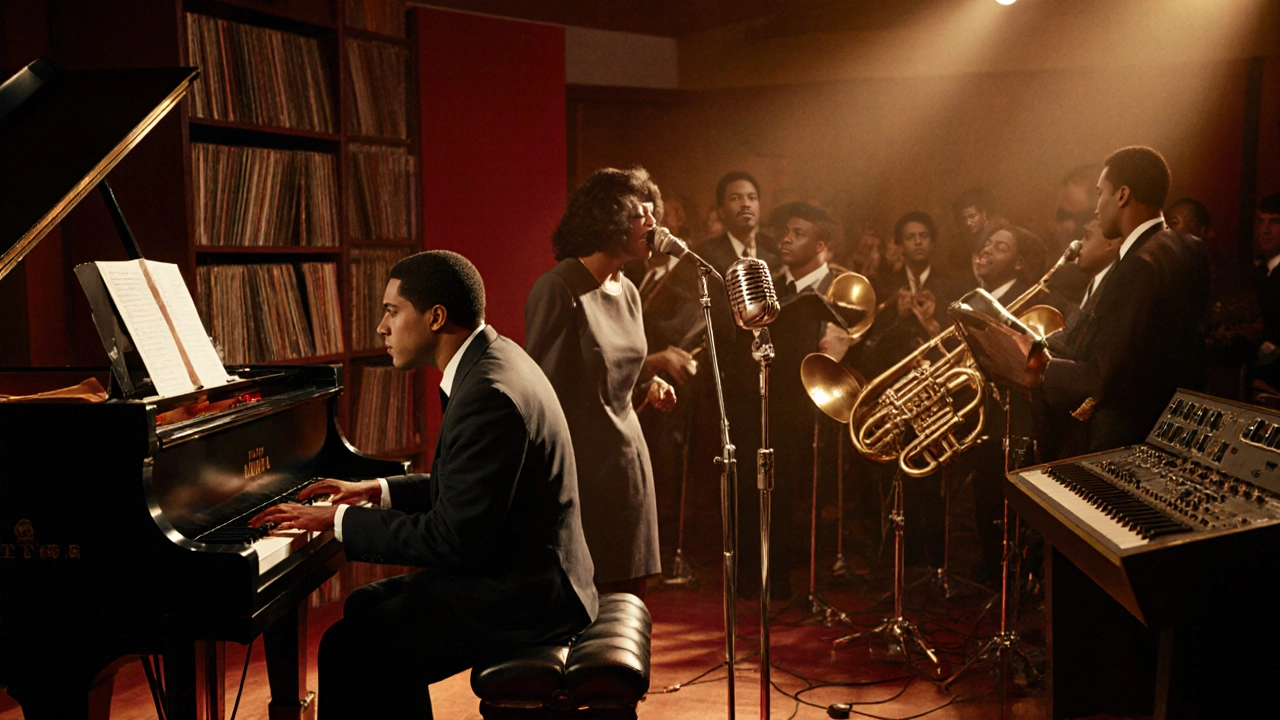Soul Element Finder
Find Soul Influences in Hip-Hop Tracks
Enter any modern hip-hop track name to discover which classic soul elements influence it.
Soul Elements Detected
Common soul elements used in hip-hop:
Based on the track you entered:
Why this matters:
Understanding these connections shows how hip-hop maintains the emotional core of soul music while evolving.
When you hear a modern rap track with a warm, melodic hook or a groove that makes you sway, chances are a piece of Soul music is humming underneath. The link between classic soul records and today’s hip‑hop isn’t a coincidence-it’s a tireless conversation that’s been going on for decades. This article untangles that conversation, showing you where the soul lives in beats, lyrics, and culture, and why it matters for the next wave of artists.
What Soul Music Actually Is
Soul music is a genre that emerged in the 1950s and 60s, blending gospel vocals, R&B rhythms, and jazz improvisation. Its hallmark traits are heartfelt vocal delivery, lush horn sections, and a steady, dance‑ready backbeat. Originators like Ray Charles, Aretha Franklin, and the Motown assembly line (featuring Smokey Robinson and Marvin Gaye) turned church‑style emotion into commercial hits that still get air‑play in 2025.
Hip‑Hop’s Roots in the Same Streets
Hip‑Hop burst onto the scene in the late 1970s, born from block parties in the Bronx where DJs looped the “breaks” of funk and soul records to keep dancers moving. Those breaks-short drum‑heavy sections-became the backbone of early rap tracks. In other words, hip‑hop’s DNA was literally cut from soul vinyl.
How Sampling Turns Soul Into Modern Beats
Sample‑based production is the most direct evidence of soul’s impact. Producers like J Dilla and Kanye West have built entire albums around looping a single soul phrase. For instance, Kanye’s “Through the Wire” flips a 1968 Chaka Khan hit, pitching it up to sound fresh while preserving the original’s emotional weight.
Below is a quick look at which soul attributes get sampled most often:
| Soul Element | Typical Hip‑Hop Use | Example Track (Artist) |
|---|---|---|
| Horn Stabs | Layered hooks or accents | “All of the Lights” - Kanye West |
| Vocal Ad‑libs | Background texture | “Dead Presidents II” - Jay‑Z |
| Drum Breaks | Core rhythm foundation | “Fight the Power” - Public Enemy |
| String Swells | Atmospheric bridges | “Shook Ones Pt. II” - Mobb Deep |

Lyrical Themes That Cross Over
Beyond the beats, soul’s storytelling sensibility seeps into hip‑hop lyrics. Soul songs often navigated love, struggle, and social justice-topics that rap artists also explore, albeit with a different cadence. Kendrick Lamar’s “Alright” echoes the hopeful resolve found in Marvin Gaye’s “What’s Going On,” while J. Cole’s “Love Yourz” mirrors the reflective gratitude of classic ballads.
Artists Who Bridge the Gap
Some hip‑hop acts intentionally fuse the two genres, creating a hybrid that feels both nostalgic and new. Think of Anderson .Paak, whose drumming, gospel‑inflected vocals, and funky bass lines recall the Motown era, yet his verses land squarely in modern rap territory. Similarly, Saba samples vintage soul chops on tracks like “Busy / Sirens,” letting his introspective verses ride smooth, warm chords.
Why the Fusion Matters for Tomorrow’s Sound
Understanding the soul‑hip‑hop relationship isn’t just academic; it points to where the next sonic breakthroughs will appear. As AI‑driven music generators learn to dissect genre fingerprints, they’ll likely mash up soulful chord progressions with trap percussion, creating soundscapes that feel both familiar and futuristic. Moreover, the cultural bridge continues to influence fashion, dance, and even political activism, keeping the spirit of soulful expression alive on streaming platforms.

Quick Checklist for Spotting Soul Influence
- Warm, analog‑type instrumentation (horns, strings, electric piano)
- Vocal callbacks-“uh‑uh,” “yeah,” or melodic ad‑libs
- Sampled drum breaks that sit prominently in the mix
- Lyrics that discuss love, hardship, or community uplift
- Use of live musicians or live‑recorded feel, even in digital productions
Future Listening Guide
Want to hear the evolution in action? Start with these three playlists:
- “Classic Soul Foundations” - tracks from 1960‑1975 (e.g., Otis Redding, Al Green)
- “90s Hip‑Hop Sample Gold” - songs that heavily borrow from the first list (e.g., “Can’t You See” - Common)
- “2020‑2025 Neo‑Soul Hip‑Hop” - recent releases that blend the two (e.g., “Redbone” - Childish Gambino, “Coffee” - Miguel & Anderson Paak)
Switching between these will sharpen your ear for the subtle handshakes between decades.
Frequently Asked Questions
Which soul songs are most sampled in hip‑hop?
Tracks like “Ain't No Sunshine” by Bill Withers, “Sir Duke” by Stevie Wonder, and “I Want You Back” by The Jackson 5 have been lifted hundreds of times. Their drum breaks and vocal hooks fit perfectly into 808‑driven beats.
How does soul influence modern rap lyrics?
Soul’s emphasis on storytelling and emotional honesty inspires rappers to write verses that are both personal and socially aware. Themes of love, loss, and resistance in songs by Otis Redding or Sam Cooke echo in the verses of artists like J. Cole and Kendrick Lamar.
Can I produce a soul‑inspired hip‑hop beat with free software?
Absolutely. Programs like Audacity, Cakewalk, or the free tier of FL Studio let you import classic soul loops (many are in the public domain) and layer them with drum kits and 808 basses. The key is to keep the warm, analog feel-use EQ to roll off high‑end harshness and add tape‑saturation plugins.
Why do live instruments still matter in digital hip‑hop?
Live horns, strings, and piano bring a human ebb‑and‑flow that samples alone can’t replicate. Listeners subconsciously pick up on the small timing variations, which add depth and keep the track from sounding overly mechanical.
What’s the next step for artists who want to blend soul and hip‑hop?
Collaborate with musicians from both traditions. Bring a choir on a trap beat, or have a funk bassist lay down a groove for a lyrical freestyle. The most exciting tracks come when the two worlds meet in the studio, not just in the crate‑digging.

